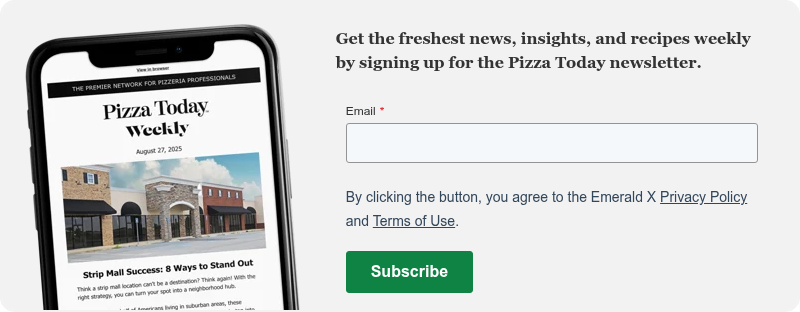
It’s the end of a long day, and you see a message come through. Maybe it’s an e-mail, a review, a direct message or a voicemail from someone complaining they got violently sick a few hours after eating at your restaurant. What do you do? How do you respond thoughtfully and apologetically without putting yourself into a legally precarious position for something you might not have even caused?

Mike Bausch, owner, Andolini’s Pizzeria
There is a misconception with a foodborne illness that whatever you ate last must be the culprit. In talks with my local health department and other medical professionals, I now know that typically, foodborne illnesses happen many hours later. Reaction to a foodborne illness could occur as many as three weeks after the initial pathogen enters someone’s system. Nonetheless, this misconception is pervasive in our industry.
Whenever any customer has a problem, I always tell the staff to analyze it as if it’s true but don’t own it until you verify and know it to be 100-precent correct. That’s extremely hard to do with foodborne illness. If someone says that they got sick at 9 o’clock after having a pepperoni pizza at 8 o’clock, the likelihood that a fully cooked (at 550-F) pizza containing pepperoni, mozzarella and pizza sauce on cooked pizza dough could cause a violently sick reaction in a non-allergic customer is next to nothing. Nonetheless, we’ll look at cameras, make sure our health protocols are followed, and check all of our food dating, which are incredibly meticulous. Additionally, we check that staff washed their hands while working, and contact surfaces are clean.
This all assumes you run a clean kitchen. If you don’t, you very well could cause someone to get sick. Assuming your pizzeria is clean and following proper protocols, the next step is mitigating the fallout respectfully and conscientiously without owning the potential legal fallout. If a diner threatens to call the Health Department, encourage them to do so and call them yourself. If you have nothing to hide, this should go well, and the Health Department, more likely than not, will affirm to this person that the odds of it coming from your establishment in such a short timeframe are small.
Never preach to a customer but rather inform with facts from the Health Department. Show them links to the health department sites that verify this information. Then take this opportunity to overshare all the precautions you take. Gather up all your labeling procedures and security camera footage of their pizza being made. If someone threatens to go negative against you on social media, don’t let it rile you up and don’t retort negatively. Make sure you take their concern seriously and openly show that you genuinely care about their health. It’s our duty as members of the hospitality industry to create a safe environment for our guests.
Movies and TV shows have not helped this perception. In The Last Dance basketball documentary, Michael Jordan is sure he was food poisoned by a local pizzeria before his big “Flu Game” in 1997. Upon further review, the guy who served the pizza was a fan of Jordan’s who was a new manager to a large chain pizzeria. The man blamed for the sickness says he was just excited to deliver to Jordan and brought some staff with him in hopes of meeting MJ. The assumed cause is always what the person ate last. We might never know the truth, but I do know that in the 20 years I’ve been making food at restaurants, I’ve NEVER seen someone sabotage a customer’s food.
In the worst scenario, I’ve seen people mock a customer behind their back, complain about them or even call out a name improperly, but never actual harm to the product that is being created. This is pervasive misconception diners have of food workers; that if they complain, someone’s going to go to the back and spit in their food. Which, as disgusting as it is, would not likely lead to food poisoning. Improper temperature controls and out of date food cause that. In a pizzeria that is bustling and cooking at high temps with fast product turnover, that probability is even smaller.
The way to handle any customer complaint is to always be on the side of the customer, to figure it out with them, to work with them. All the while informing them of all potential scenarios and reasons for their illness and educating them on all the proactive measures you do to make sure that they are in a safe environment. Do this, and you’ll get past this in a very conscientious and successful way that shows the customer you care and are safe.



